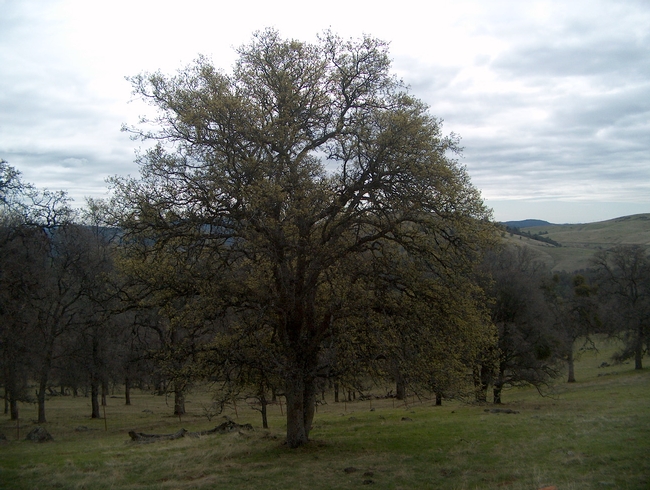Towards the end of January, an unusual phenomenon occurred in the Sierra foothills - some of the blue oaks began leafing out. While the vast majority of trees remained leafless, one could see occasional light-green canopies interspersed with their bare neighbors. This is unusual in that the earliest leaf-out most people recall observing doesn’t start until late February or early March.
So what is causing this? Clearly the weather pattern this past winter has been very unusual in terms of precipitation. There was abundant early rainfall in October and November, followed by a December and January that were some of the driest on record. However, dormancy and its subsequent breaking are much more controlled by temperature than by rainfall. That is, a significant period of cold is necessary before most temperate plants resume growth in the spring. Photoperiod – or the relative daily lengths of light and darkness - also often plays an important role but this obviously doesn’t vary from year to year.
Has the temperature pattern been abnormal? The CIMIS (California Irrigation Management Information System) long-term data was compared with this past winter’s averages and nothing stood out as particularly different, although there is apparent, large variability from year to year. There was a day or two of somewhat colder-than-average temperatures in mid-January, but below-freezing temperatures in the foothills occur almost every year. Therefore, at this point, the cause of early leaf-out remains a mystery.

What about the impacts? It is likely that some of these “early leafers” will suffer frost damage. This occurred several years ago in mid-spring when there was an unusually late freeze and many blue oaks had their foliage killed back. Most of this occurred at mid-elevations, presumably because trees at higher elevations hadn’t leafed out yet, and those at lower elevations were so far advanced that their foliage was hardier. While this certainly wasn’t good for the trees, they were able to recover and produce a new crop of leaves within a month or 6 weeks and no increase in mortality was noted. It seems likely that, as a species, blue oaks have evolved individuals that leaf out at different times of the year so that at least a portion of their population can take advantage of different weather conditions. The “risk takers” might get hammered now and then, but under the right conditions, they can take better advantage of unusual weather patterns than their more conservative colleagues. In the event of significant warming in California as a result of climate change, these may even be better adapted to survive and prosper in a changing environment.